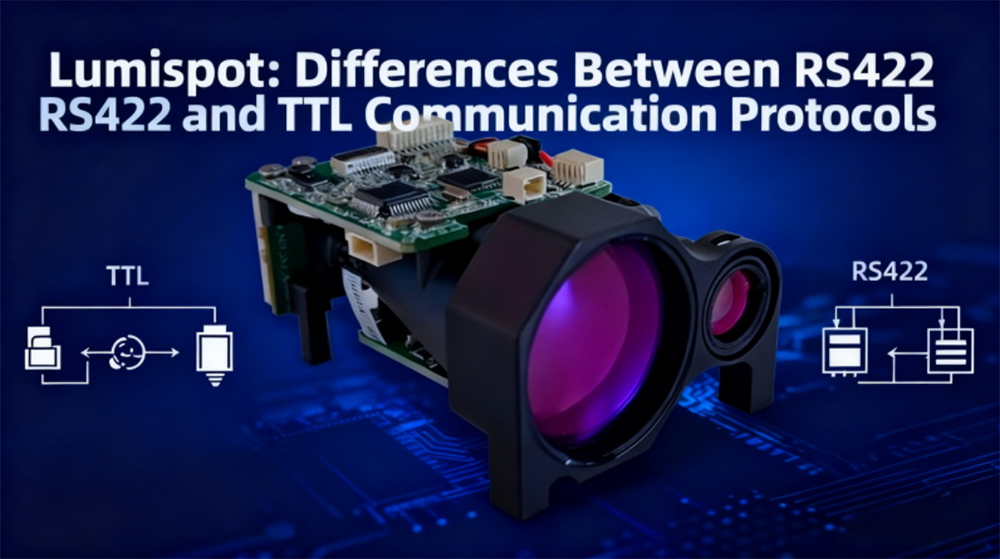In the equipment integration of laser rangefinder modules, RS422 and TTL are the two most widely used communication protocols. They differ significantly in transmission performance and applicable scenarios. Choosing the right protocol directly affects the data transmission stability and integration efficiency of the module. All series of rangefinder modules under Lumispot support dual-protocol adaptation. Below is a detailed explanation of their core differences and selection logic.

I. Core Definitions: Essential Differences Between the Two Protocols
● TTL Protocol: A single-ended communication protocol that uses high level (5V/3.3V) to represent "1" and low level (0V) to represent "0", transmitting data directly through a single signal line. Lumispot's miniature 905nm module can be equipped with the TTL protocol, suitable for direct short-distance device connection.
● RS422 Protocol: Adopts a differential communication design, transmitting opposite signals through two signal lines (A/B lines) and offsetting interference using signal differences. Lumispot's 1535nm long-distance module comes standard with the RS422 protocol, specifically designed for long-distance industrial scenarios.
II. Key Performance Comparison: 4 Core Dimensions
● Transmission Distance: The TTL protocol typically has a transmission distance of ≤10 meters, suitable for short-distance integration between modules and single-chip microcomputers or PLCs. The RS422 protocol can achieve a transmission distance of up to 1200 meters, meeting the long-distance data transmission needs of border security, industrial inspection, and other scenarios.
● Anti-Interference Ability: The TTL protocol is susceptible to electromagnetic interference and cable loss, making it suitable for interference-free indoor environments. The RS422's differential transmission design offers strong anti-interference ability, capable of resisting electromagnetic interference in industrial scenarios and signal attenuation in complex outdoor environments.
● Wiring Method: TTL uses a 3-wire system (VCC, GND, signal line) with simple wiring, suitable for small device integration. RS422 requires a 4-wire system (A+, A-, B+, B-) with standardized wiring, ideal for industrial-grade stable deployment.
● Load Capacity: The TTL protocol only supports communication between 1 master device and 1 slave device. RS422 can support networking of 1 master device and 10 slave devices, adapting to multi-module coordinated deployment scenarios.
III. Protocol Adaptation Advantages of Lumispot Laser Modules
All series of Lumispot laser rangefinder modules support optional RS422/TTL dual protocols:
● Industrial Scenarios (Border Security, Power Inspection): The RS422 protocol module is recommended. When paired with shielded cables, the bit error rate of data transmission within 1km is ≤0.01%.
● Consumer/Short-Distance Scenarios (Drones, Handheld Rangefinders): The TTL protocol module is preferred for lower power consumption and easier integration.
● Customization Support: Custom protocol conversion and adaptation services are available based on customers' device interface requirements, eliminating the need for additional conversion modules and reducing integration costs.
IV. Selection Suggestion: Efficient Matching by Demand
The core of selection lies in two key needs: first, transmission distance (choose TTL for ≤10 meters, RS422 for >10 meters); second, operating environment (choose TTL for indoor interference-free environments, RS422 for industrial and outdoor settings). Lumispot's technical team provides free protocol adaptation consulting to help achieve seamless docking between modules and equipment quickly.
Post time: Nov-20-2025
